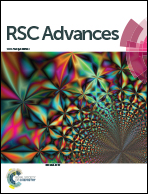ZnO–graphene–polyaniline nanoflowers: solution synthesis, formation mechanism and electrochemical activity†
Abstract
Three dimensional hierarchical inorganic–organic hybrid nanoflowers of conducting ZnO–chemically converted graphene–polyaniline nanocomposite have been successfully synthesized at low temperature from surfactant-free precursor solution and studied their formation mechanism. The nanocomposite with hierarchical architecture shows an enhanced electrochemical activity, illustrating a promise for application in electrochemical devices.


 Please wait while we load your content...
Please wait while we load your content...